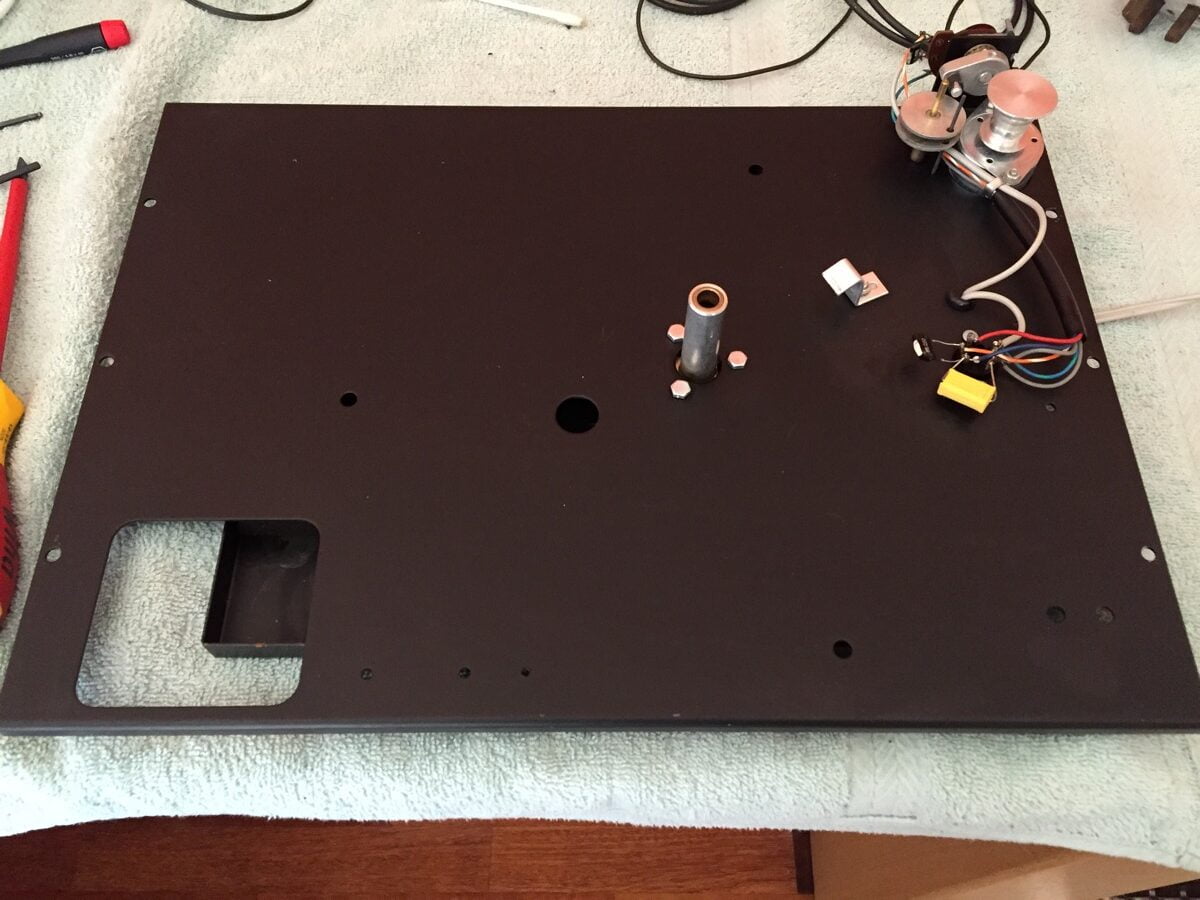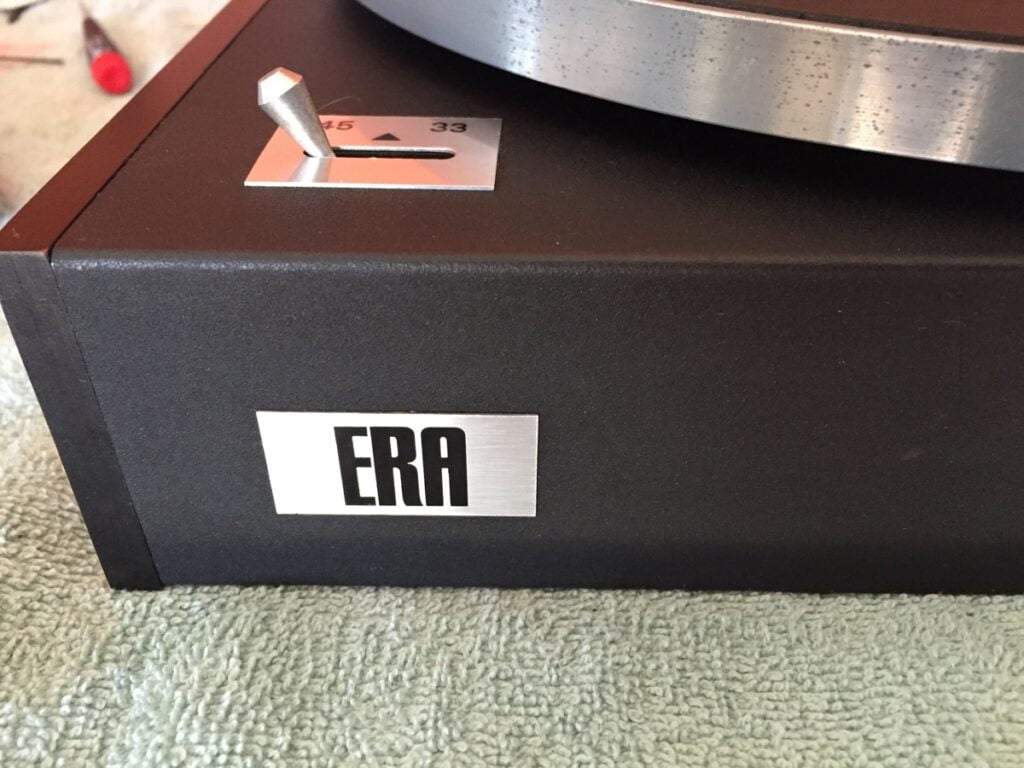As a surprise birthday gift, I was asked to restore this lovely old French ERA Mk6 belt-drive turntable.
I was happy to assist and it allowed me to work on a deck I’d not worked on before. The ERA Mk6 is a belt-drive deck from the early seventies. It is slightly unusual in the actual mechanical layout of chassis, plinth, platter and motor and I had never seen anything quite like it.
Details
The Mk6 originally shipped without an arm, but the British importer then added a very nice SME 3009, all for the price of – can you believe it – 88 pounds! The deck is not heavy and neither is the platter, which is spun by a multi-pole AC motor.
The chassis of the ERA Mk6 is built up from thin sheet steel, painted black and there is a wooden arm mounting board, cut out for the SME of course. The motor is mounted on a sub-section that also houses the bearing, arm and platter, but the motor is a 48-pole unit and generates less vibration than many.
Another unusual feature is that the bearing itself sits roughly in the plane of the record, as opposed to deep within the bearing well. This is a design aspect the Pioneer later claimed as their ‘Stable Platter’ design, but clearly, this was thought about by ERA in the early ’70s!
Here’s a link to the ERA catalogue from the time.
Overhaul
This ERA deck came to me in quite a state. The smoked perspex dust cover was virtually destroyed, cartridge clips had been broken off the headshell wires, the belt had dissolved into dust, the cartridge was broken and needed a new stylus and the tonearm was exceptionally dirty and completely out of adjustment.
I had to clean and adjust and repair almost everything on this deck. I also fitted a nice new Japanese JICO stylus for the lovely Shure V15 cartridge installed on this old girl. The end result was a very nice sounding ERA Mk6 that should now give years of trouble-free service.


















Discover more from LiQUiD AUDiO
Subscribe to get the latest posts sent to your email.


I thought no more work until next year?
Correct, this is one of many repairs I have still to list from this year!
Will the player play 45’s with the german belt? I have a similar where the belt needs replacement, but i read somewhere that the belts that you can buy today is too wide, in comparison to the original and that the speed changer does not work.
Hi Povl, it’s true that the belt dimensions must be spot on, this is true for most belt drive machines, especially those utilising mechanical speed change mechanisms. Length, width and thickness are critically important. This deck worked perfectly on both speeds after I was done with it, but keep in mind that many just changing a belt won’t have the experience/knowledge to get the deck running properly anyway. I use reliable vendors who supply belts that meet the specifications in my database, or, where I don’t have those specs, that I trust will send me the right sized belt based on their database. These days I keep many pieces of the common belts I need in stock.
Can you remember where you got the drive belt, I have a mk4 in need of a belt change, dimensions would be useful please
Hi Mike, my name is Mike and I create all the content, like this article you’ve enjoyed. You are welcome to seek technical assistance via my contact page.